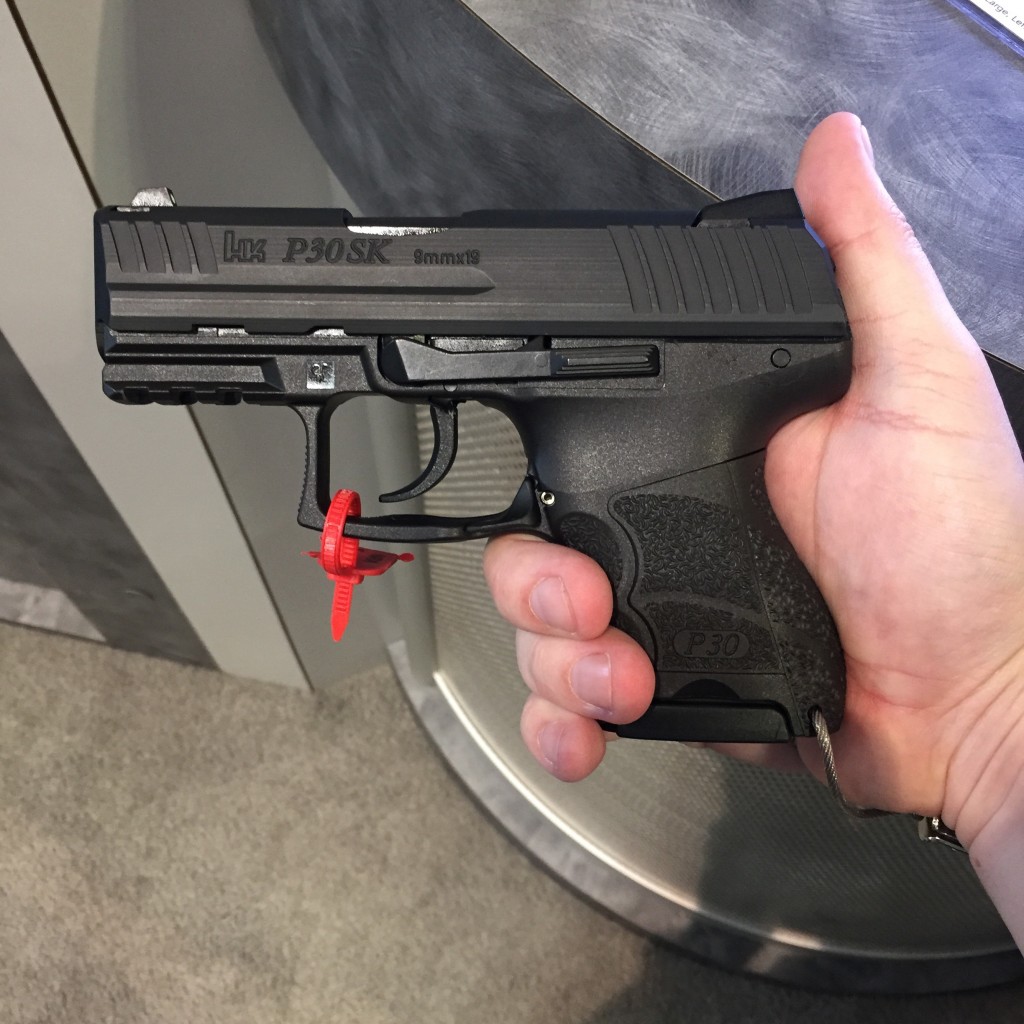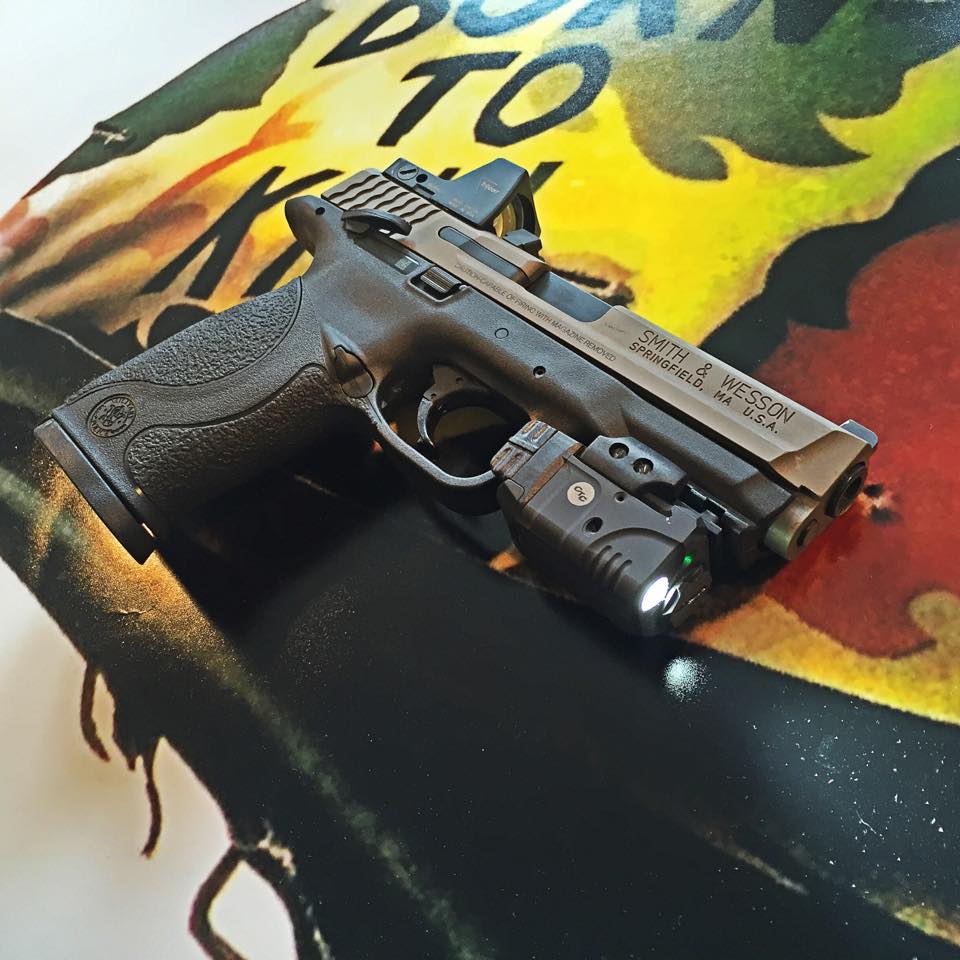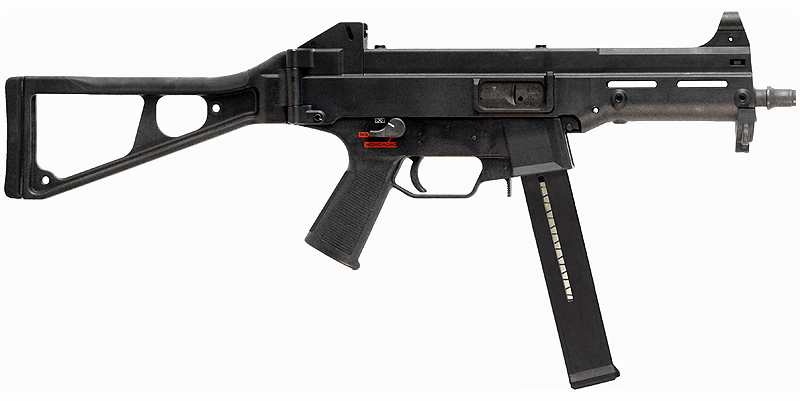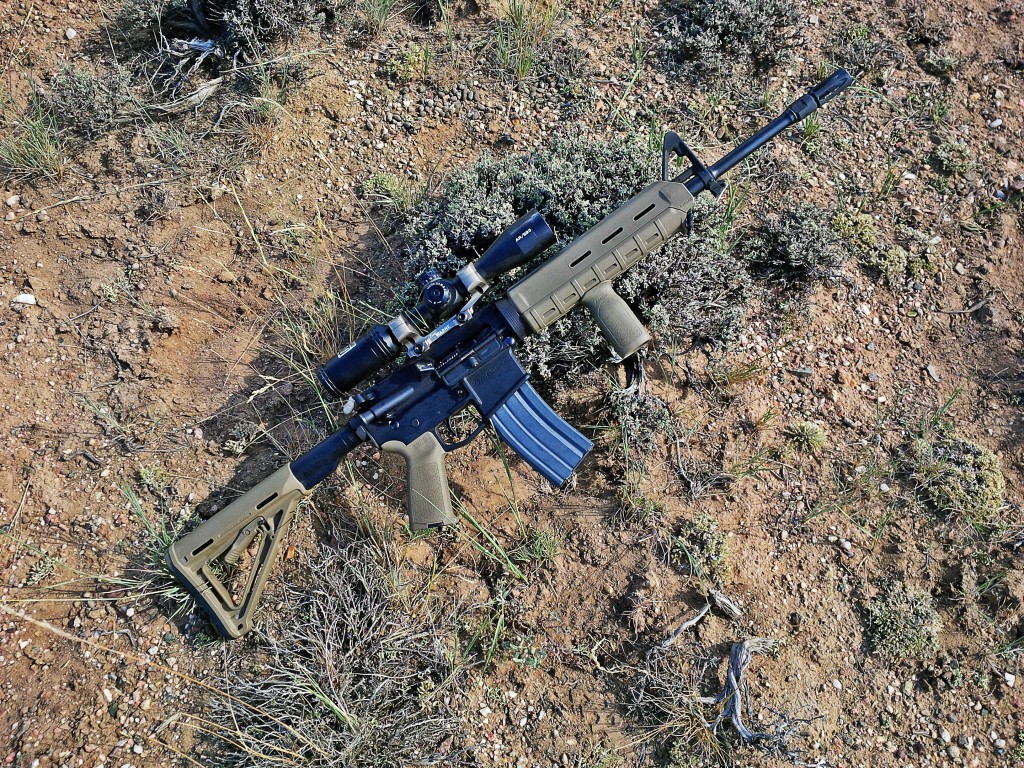First look: HK P30SK

At the 2015 NRA Annual Meetings, HK announced the product I am the most interested in, the new P30SK. SK, in HK nomenclature denotes a subcompact pistol, and the new P30SK definitely fits the bill.
What you don’t know can hurt you
Lately I have seen a lot of discussion about the details of best practices when handling weapons on various internet fora. Some of the discussions have been quite enlightening. Others…not so much. I thought it would be useful to give my perspective on some of these issues perhaps as food for thought and further (hopefully intelligent) discussion.
Let’s start by facing the cold hard reality that makes these discussions important: People have accidents with firearms. Just in the last week I’ve met two people who relatively recently experienced an unintentional discharge with a firearm. Let’s just look at the last several days in the headlines: A man experienced an unintentional discharge at an Easter Mass service, a police officer in Indianapolis was injured when his sidearm was unintentionally discharged into his own leg, and a police officer in Florida was killed when another officer unintentionally discharged his weapon while attempting to unload it. These things happen, and more regularly than we might like to admit.
Whether we are carrying a weapon for self defense, duty, or in pursuit of recreation like hunting or competition the thing we are holding is a lethal weapon capable of killing or maiming in the blink of an eye. The way we handle lethal weapons matters. The details of what we do, of what we ingrain into our handling habits (or fail to ingrain, as the case may be) could literally make the difference between life and death in a critical moment.
One of the big problems I have with the discussions I’ve seen so far on trigger finger discipline is that a couple of fundamental questions seem to be left out of the discussion…so I will pose them now:
Do you know when your finger is on the trigger of your firearm? Is the point at which your finger touches the trigger the result of a conscious decision?
I ask these questions because in my experience the answer to both questions is a firm “No” quite a lot of the time. I base that on watching by this point thousands of people on the range and in other areas of life handling weapons…and based on what I know about myself, too. To quote myself from an article I wrote sometime back:
“My friend Todd Green is a big photography nerd and he likes to take pictures when he’s taking a class.He sent a series of pictures of me performing a draw from the class I did with Robert Vogel and noted that in one of them my finger was on the trigger of my Glock 34 before the pistol was in my eyeline. The pistol was pointed at the berm and if it went off in that position the bullet probably still would have hit the silhouette downrange and so some would doubtlessly wonder why I would be concerned. I’m concerned because at that moment I didn’t intend to have my finger on the trigger. With the stress of the clock and an audience, I was doing something I didn’t even notice.”
In my own experience I have found that video tape and pictures of what I’m doing on the range often highlight things I do not notice in the moment with the weapon in my hand. When I’m teaching or observing others I usually pick up things they are doing that they don’t realize either. The value of an intelligent outside observer cannot be overestimated when it comes to improving your practices or making you aware of what you are actually doing…especially when safety matters are involved.
Note that when I saw the pictures from Todd I didn’t immediately begin to reason why it wasn’t dangerous for my finger to be on the trigger when it was…my exact response to him was:
“Damn…I need to work on that.”
Why? Because any time a finger is on the trigger without a conscious decision to have it there at that exact moment in time is a problem. My finger is pretty standard issue human trigger finger attached to a pretty standard human being subject to all the faults and foibles attendant to the species. There’s nothing special about my trigger finger or the person it’s attached to that makes a bad outcome impossible.
The chances of a bad outcomes increase the more you handle firearms around people. Usually when there is a loaded gun in my hand it’s in the relatively safe environment of the range. There’s a berm or a backstop in front of me capable of holding a round and all I have to do is keep the muzzle from breaking a 180 and I’m OK. I don’t often find myself with a gun in my hand in the 360 degree environment of the real world where “safe direction” is often really just “the safest direction I can find at the moment” and where the stuff that catches bullets is either very expensive or bleeds. Based on that, some would argue that my worry about the moment in time where my finger touched the trigger in the draw stroke is overblown…but I disagree.
What you don’t know can hurt you…and others.
I’m not going to get into the details of when, exactly, you should be touching the trigger during your draw or presentation to a target. I’m not going to get sucked into a debate about what “competition” guy X does vs. what “tactical” guy Y teaches…although I will parenthetically remind everybody that a lot of “competition” and “tactical” guys have had unintentional discharges due to a blend of human nature, stress, and the pursuit of speed.
I’m simply going to pose this thought: Whenever your finger is touching the trigger of a firearm, it should be the result of a conscious decision to have it there at that exact moment. If it isn’t…and experience and a basic understanding of human nature tells me that for a lot of people in many situations it most certainly isn’t…then there is work to be done.
Media Lodge Acquiring GunUp To Form Largest Firearms Media Platform
WILTON, CT (April 7, 2015) – The Media Lodge acquisition of GunUp
creates the largest media platform in the firearms industry. Marketing
opportunities will be greater than ever for companies within the industry to
reach their target audience.
The acquisition provides an expanded digital presence for online
advertising, email marketing with larger qualified lists as well as additional
opportunities for content integration, commerce, creative development and
analytics.
With a combined audience of nearly 13 million monthly unique visitors and
over 200 million impressions, GunUp adds great websites like The Truth
About Guns and M4Carbine to Media Lodge’s existing portfolio of sites
including GunBroker.com and 50 Campfires.
Additionally, the acquisition includes GunUp the Magazine, one of the
most recognized print publications in the firearms industry. GunUp
the Magazine’s circulation will grow significantly with the addition of
all GunBroker.com’s opt-in members offering a larger audience for
advertisers.
Jeff Siegel, CEO of Media Lodge said, “The GunUp acquisition is the
next step in Media Lodge realizing our vision of an audience platform that
encompasses hunting, firearms, fishing, marine, camping, motor sports and
active enthusiasts.”
The combined audience, coupled with the significant investment Media
Lodge has made in analytics tools, will allow advertisers to reach
their target audiences and manufacturers to improve their operational
efficiencies.
“We are excited about this acquisition and working under the Media Lodge
banner to build the largest digital media company in the Outdoors industry,”
said Dan Hall, CEO of GunUp.
To learn more about these enhanced advertising opportunities, contact Director of Sales Christen Everly at: [email protected]; or 952-847-4437 or Director of Sales Lee Sarles at: [email protected] or 952-847-4438.
About Media Lodge
Media Lodge develops powerful and influential interactive media brands and platforms for active enthusiasts and fans in the shooting, hunting, prepping, fishing, outdoor adventure, and spectator racing sports categories, effectively connecting advertisers with these high value and hard to reach audiences. Media Lodge designs custom programs for sponsors to drive maximum value for their advertising spend while creating new value for its online communities. Custom content, video and high-impact display ads are delivered at scale through its exclusive branded properties and network of North America’s best enthusiast digital properties. Media Lodge has extensive experience and knowledge of active enthusiast markets and helps advertisers effectively deliver the right message to this loyal consumer base. Notable exclusive branded properties include 50campfires.com, the definitive source for car camping information, and GunBroker.com, the world’s largest online auction site for firearms and shooting/hunting accessories and the most visited website in the shooting sports industry.
About GunUp
Born in tech-savvy Seattle and raised in the heartland of America in Sioux
Falls, GunUp is a cutting-edge media company built by experienced
military veterans, shooting sports competitors, and publishing professionals.
GunUp reaches over 5 million gun enthusiasts online each month with a
focus on self-defense, target shooting, and concealed carry.
On the road today

So here’s a photo of Danica Patrick’s Indy Lights car. Why? Because racecar.
Walking around gun

The most dangerous thing I do any given day is walk my dog. I don’t actually mean that as a joke, either. Dog walking means walking, and there are occasionally unsavory characters around. Continue reading →
Gun Nuts Review: Smith & Wesson M&P9 ultimate tactical edition

There is no doubt that pistols equipped with red dot sights are here to stay. That’s the future of handgun shooting, and while the technology isn’t quite 100% yet, for many shooters it’s an excellent solution. I’ve done a bit of work with dot equipped pistols in the past, but thought it was high time to commit some of that work to paper. Our initial test platform is a Smith & Wesson M&P9 with thumb safety that has had the slide milled to accept a Trijicon RMR and equipped with a Crimson Trace Railmaster Pro green laser/light.
Ignore the gunstore doctors…take the ride
A couple of weeks ago I gave an outline of some of the lessons I took away from the “Experiential Learning Laboratory” put on by Craig Douglas at the 2015 Tactical Conference. As I said in that writeup, I witnessed a lot of interesting reactions to unfamiliar stress. One reaction in particular, though, gave concrete form to a complaint that’s been running around in my head for quite some time about the way people are told to react after a use-of-force event.
There is a lot to worry about in the aftermath of a UOF event like a shooting, but the medical condition and safety of the honest citizen involved is often short changed among them. The average Joe or Jane who has just been involved in a shooting has likely just been exposed to the most intensely stressful event they have ever experienced. The physical effects of this stressful event can be lethal. I want to repeat that for the sake of clarity: Just experiencing the sort of life-or-death stress attendant to a defensive use of force can kill.
In the ELL we saw one gentleman who handled himself magnificently in dealing with the problem, and unlike a lot of us he had absolutely picture-perfect recall of the events he’d just been through. Physically, however, I was concerned we were going to have to have some sort of medical intervention on the spot. If there was a video clip that was used to define “labored breathing” what we saw in those moments would be it. This was the first time he’d ever been in anything like a force-on-force scenario and the physical toll the stress was taking on him was so severe that several bystanders were concerned he was going to have what the medical community refers to as a “major adverse cardiac event.” In other words, a heart attack.
The American Heart Association warns:
“Some heart attacks are sudden and intense — the ‘movie heart attack,’ where no one doubts what’s happening. But most heart attacks start slowly, with mild pain or discomfort. Often people affected aren’t sure what’s wrong and wait too long before getting help. Here are signs that can mean a heart attack is happening:
- Chest discomfort. Most heart attacks involve discomfort in the center of the chest that lasts more than a few minutes, or that goes away and comes back. It can feel like uncomfortable pressure, squeezing, fullness or pain.
- Discomfort in other areas of the upper body. Symptoms can include pain or discomfort in one or both arms, the back, neck, jaw or stomach.
- Shortness of breath with or without chest discomfort.
- Other signs may include breaking out in a cold sweat, nausea or lightheadedness“
Adrenaline’s primary function in the body is to rapidly elevate the heart rate, blood pressure, and respiration so that oxygenated blood is supplied to the muscles for fighting or flighting. Experiencing shortness of breath, nausea or lightheadedness, and chest discomfort from adrenaline alone in these situations is fairly common. The severity of these symptoms likely varies with your age, physical fitness, your familiarity with experiencing stress (stress inoculation) and your innate ability to process stress.
So how do you, the layman who doesn’t have advanced medical knowledge, tell the difference between the normal effects of adrenaline and the warning signs of a major cardiac event? To put this as bluntly as possible, you can’t. I’ll point again to what the American Heart Association says on the very same page quoted above:
“Learn the signs, but remember this: Even if you’re not sure it’s a heart attack, have it checked out (tell a doctor about your symptoms). Minutes matter! Fast action can save lives — maybe your own. Don’t wait more than five minutes to call 9-1-1 or your emergency response number.”
I’ve discussed this with a few medical professionals and I assure you that when I posed the scenario of a roughly middle-aged man presenting shortness of breath, a pounding heart/chest discomfort, light headedness and a cold sweat walking into their facility they all said that they would, as a matter of policy, assume that he was experiencing a heart attack and begin remedial action based on that assumption. I’ve been in the emergency room on a busy night waiting to see a doctor and with my own eyes I’ve seen someone exhibiting those symptoms get shoved in a wheel chair and immediately wheeled in for treatment. Doctor’s offices often call ambulances because someone walks in off the street exhibiting those symptoms.
The medical professionals use a combination of observation and testing over an extended period of time to determine whether or not you have had a heart attack. You, the layman, in the aftermath of a fight for your life are in no position to accurately diagnose your heart’s condition.
It’s not just heart attacks, either. In my session with Paul Sharp at the Tactical Conference he talked about an officer at his department who had been in a fight to arrest a suspect. In the fight the officer felt the suspect landing seemingly ineffective blows with the sides of his fist. The officer, being strong and well trained, subdued the suspect using considerably more effective blows. What the officer did not realize at the time was that the suspect had not been “bitch hitting” as the officer originally thought…that seemingly weak fist was actually holding a small knife. The officer had been stabbed several times and did not realize it. In the immediate aftermath of the arrest as backup arrived the officer felt winded, but being a trained fighter he had been winded before and he knew he would catch his breath soon.
Except he didn’t. He got worse. In the dark, wearing a dark uniform and still feeling the effects of adrenaline from a good fight he didn’t realize he had been stabbed multiple times and was bleeding profusely. In the dark, with the dark police uniform other officers didn’t realize it either. The officer came perilously close to bleeding to death surrounded by other police officers because nobody knew how badly he had been hurt.
In the immediate aftermath of a fight you may have absolutely no idea how badly injured you are. Small knives are especially lethal in this regard, as they are usually pulled out by surprise and often the person being stabbed has no clue that it has happened. In Mr. Sharp’s class there was a student who had been stabbed over a dozen times in a fight without realizing it until well after the fight was over.
There are many police departments that mandate a full medical examination of a police officer involved in a use of force precisely because experience has shown that severe, life-threatening conditions can go unnoticed in the immediate aftermath of a fight.
I mention all of this because I’ve heard of a number of instructors out there who are telling students not to call for an ambulance in the aftermath of a fight over concerns about how it looks…to the point where I’ve encountered this idea on forums and in-the-flesh discussions with people. This is utter crap. Gunstore medical experts are no better than gunstore lawyers, folks.
I will argue from now until doomsday that the average joe with little to no medical training is not in a position to accurately assess his medical state in the immediate aftermath of a fight. I would further argue that if cardiac care specialists with years of medical training and experience assume somebody presenting symptoms is having a heart attack until blood tests and observation proves otherwise that it’s the height of stupidity to tell Bob the Accountant that he should ignore the recommendations of the American Heart Association and the Red Cross when he’s experiencing those symptoms because somebody just tried to kill him.
Paul Sharp actually pointed something out to me: If you call 911 reporting you have just been in a fight they are highly likely to ask you if you have been injured. If you know you have been injured, by all means say so…but as I’ve mentioned above you may be severely injured and not know it. The response “I don’t know.” is perfectly valid.
To be clear, I’m not talking about calling for an ambulance as a legal defense strategy. The physical dangers resulting from a fight are plenty of reason to call for an ambulance and, if necessary, take the ride to get checked out. It doesn’t benefit you or your family to successfully ward off a lethal criminal assault only to drop dead from a heart attack 20 minutes after you won the fight because some doofus convinced you that the cops were going to rake you over the coals for pretending to be ill. If some dimwitted detective does try to make an issue of it later it’s pretty easy to point out his own department’s medical response policies to shut him/her up.
Ignore the gunstore doctors…take the ride. If there is any doubt about your medical situation after a shooting, then there is no doubt…get checked out by competent medical professionals immediately.
Gun Nuts Review: HK UMP45

HK has a reputation for producing legendary sub-machine guns. The MP5 is the most iconic sub-machine of all time; however I’ve always felt that the UMP, especially the UMP45 was an awesome gun that deserved a little bit more love than it got. Recently, I had the chance to spend a lot of range time with a UMP45. This is my first time reviewing a sub-machine gun, so needless to say I was pretty excited.
Top 5 AR optics under $500

You just bought an AR15, and because you’re a smart person, you bought a quality AR from a quality manufacturer like Colt or Smith & Wesson. Unfortunately, that means you’re out about $1,000 (unless you bought an M&P15 Sport), and you’ve only got $500 left to spend on an optic, because let’s face it your AR needs an optic. Luckily, we are in living in a pretty awesome world right now where decent glass is more affordable than ever. Here are 5 AR optics, each of which I or someone on staff has personal experience with for under $500 that I recommend. These are not presented in any particular order.